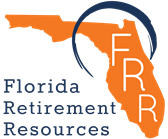FRS DROP vs. Investment Plan
Why DROP?
The FRS Pension Plan’s Deferred Retirement Option Program (DROP) can be a great added benefit for FRS Pension Plan members. The DROP program allows pension plan retirees to benefit from a lump sum payment at the end of their FRS employment, while still enjoying the benefit of the FRS pension fund. Below are some common reasons members join DROP along with some of the drawbacks
Pros:
- Liquid lump sum payable at the end of FRS employment. The amount is calculated by taking member’s monthly pension benefit, with a 4.0% annual fixed interest rate added in for up to 96 months that the member can be part of the DROP program.
- The member remains a part of the FRS Pension Plan which generates monthly income for retirees directly from the FRS pension fund.
Cons:
- You must select your pension beneficiary option prior to entering DROP, not when you separate FRS employment.
- You must separate from FRS employment at the end of the 60 months after entering DROP
- Only available for members who have reached full retirement qualification under the FRS pension plan.
Why Investment Plan?
The FRS Investment Plan is a defined contribution plan that allows members to decide how they want their retirement contributions and employer matched contributions investments based on their own goals and objectives. The plan offers flexibility with both retirement age and beneficiary options. The Investment Plan gives FRS members much more decision-making power over their retirement assets but requires that the member choose how the funds be invested. Below are some of the reasons members choose the Investment Plan, and some of the drawbacks.
Pros:
- Fully liquid lump sum of members entire FRS benefit.
- The funds can be kept in the investment plan after retirement or rolled over to a tax-qualified plan so dollars remain tax deferred.
- Members can choose and make changes to their beneficiary designations at any time without changing their benefit amount.
- The member can choose the amount and frequency they would like distributed from the account in retirement.
Cons:
- There is market risk associated with the member’s investment fund choices.
- The member must manage the distribution of the funds in retirement as to not risk over-spending and running out of funds in retirement.
Source: MyFRS.com

